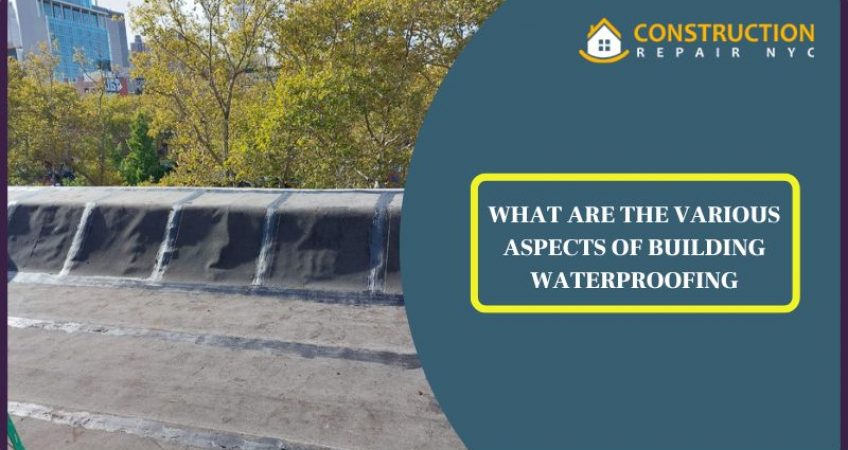Waterproofing of a building is essential to protect it from the adverse effects of moisture penetration. As a predominant factor of building damage, moisture seepage leads to leaks, concrete deterioration, blisters, peeling of the yellow paint, corrosion of the reinforcement structure, and fungal growth.
Generally, building waterproofing Bronx is done during the various stages of construction to ensure all-around protection. Exterior waterproofing of the walls and roof is not enough to safeguard the inner layers from extensive water damage. If you are already aware of this fact, then you must know it is more significant to keep the reinforced steel free from corrosion (mainly rust) for a stable and durable infrastructure.
For cities like the Bronx, Queens, Manhattan, and Westchester, where there is a considerable amount of snowfall and rainfall, it is imperative to waterproof your building by implementing membranes and coats to protect the layers underneath. Building waterproofing services Queens include basements, walls, bathrooms, kitchens, roofs, balconies, decks, swimming pools, and water tanks. Diverse methods are executed to waterproof the multiple components of a building based on the location and type of water damage.
Building Waterproofing: Distinct Aspects
The building waterproofing contractors Bronx typically does the job in layers. Exterior waterproofing aims at arresting the breathing property of the structure by avoiding seepage and the capillary progress of water. And internal waterproofing wards off the water content within the structure. Hence, the method of waterproofing in layers by using various materials and techniques allows optimal water damage protection and acts as a sustainable characteristic.
Read More:- Importance Of Building Waterproofing
The following are the distinct aspects of building waterproofing:
- Cementitious Waterproofing- It is a common and one of the most convenient methods. The materials are easy to mix and apply. It is generally employed in areas less exposed to heat and sunlight like bathrooms, decks, internal parking areas, etc because of its rigidity or semi-flexibility. Cementitious waterproofing does not allow expansion and contraction.
- Bituminous Waterproof Coating- It is also named asphalt coating where bitumen-based materials of polymerization grade are applied as a layer or coat. It possesses excellent flexibility and superior waterproofing quality. This method is ideal for commercial building waterproofing Brooklyn of the foundation which experiences zero sunlight exposure.
- Bituminous Waterproof Membrane- It is primarily of two types- self-adhesive and torch on membrane, comprising of asphalt, polymers, and filler. The bituminous membrane is extensively popular in low-sloped roofs for its enhanced functionality.
- Liquid Waterproof Membrane- Compared to cementitious waterproofing, the liquid waterproof membrane has greater flexibility and can be used on exterior surfaces like roofs, yellow-painted walls, water tanks, etc. A layer of primer topped with double coats of liquid polymer offers improved resilience.
- Polyurethane Liquid Waterproof Membrane- This method is extensively used in waterproofing commercial building flat roofs. With a considerably higher degree of flexibility and resistance to weathering, polyurethane membrane is an ideal choice for heavily used and exposed surfaces.
Read More:- Why is Building Waterproofing an Imperative Segment of Construction
To conclude, by examining the waterproofing needs of specific areas in a building, a professional contractor ascertains the right materials and techniques. Nevertheless, protecting a building from water damage is a prerequisite rather than a choice!



